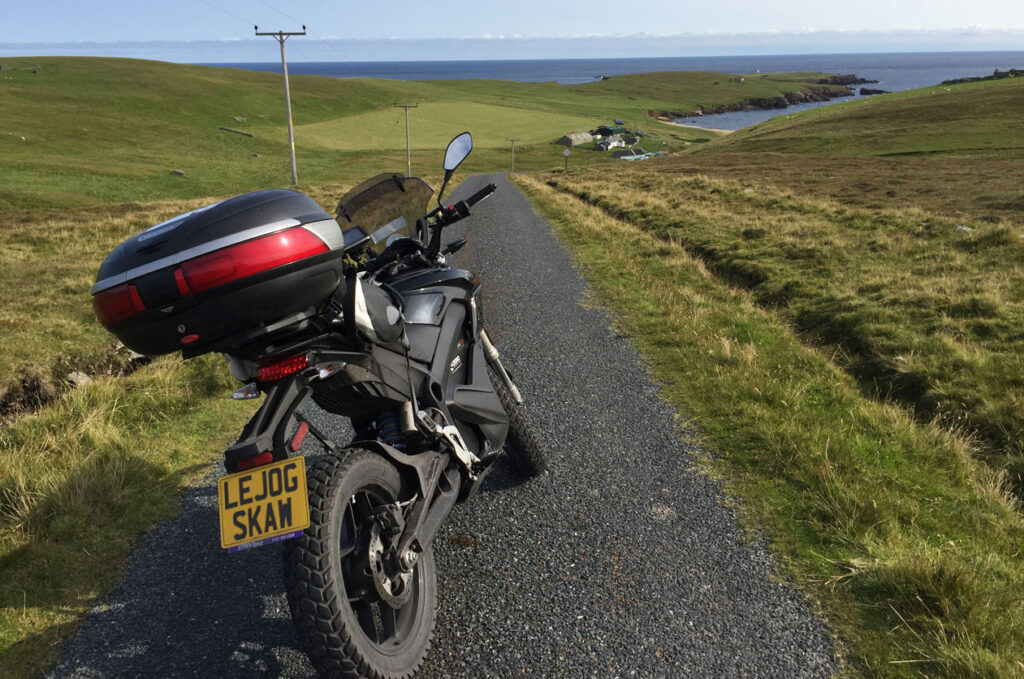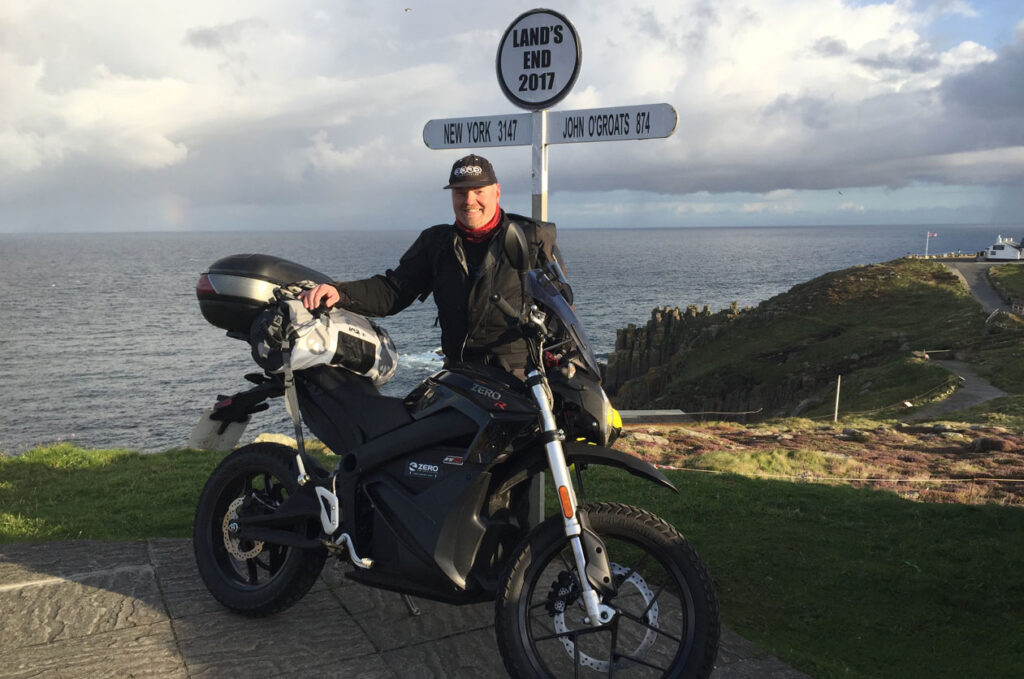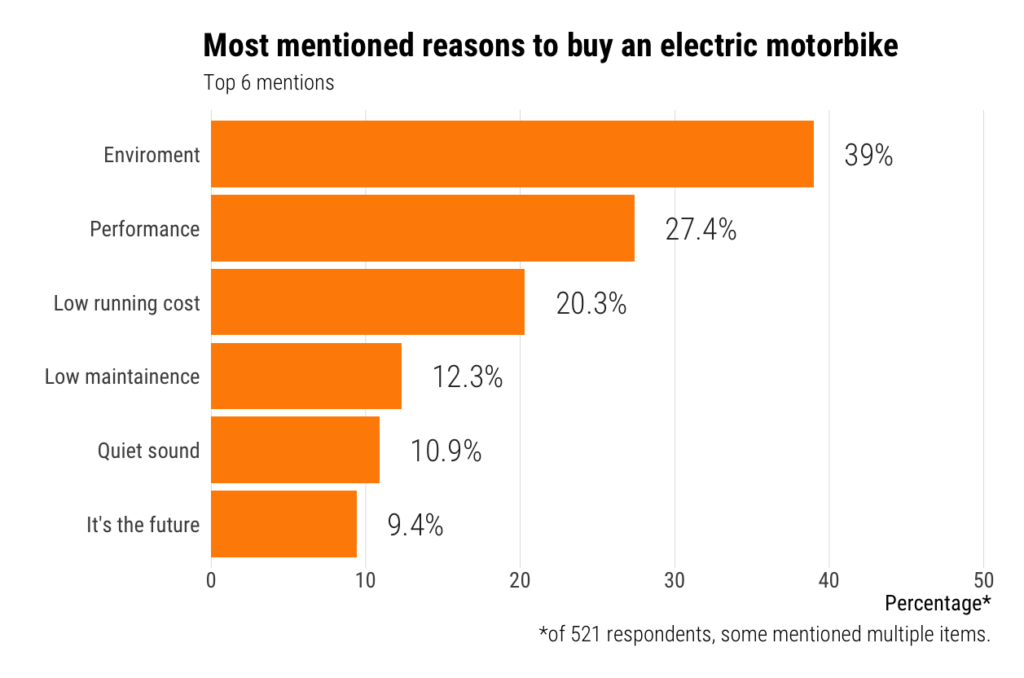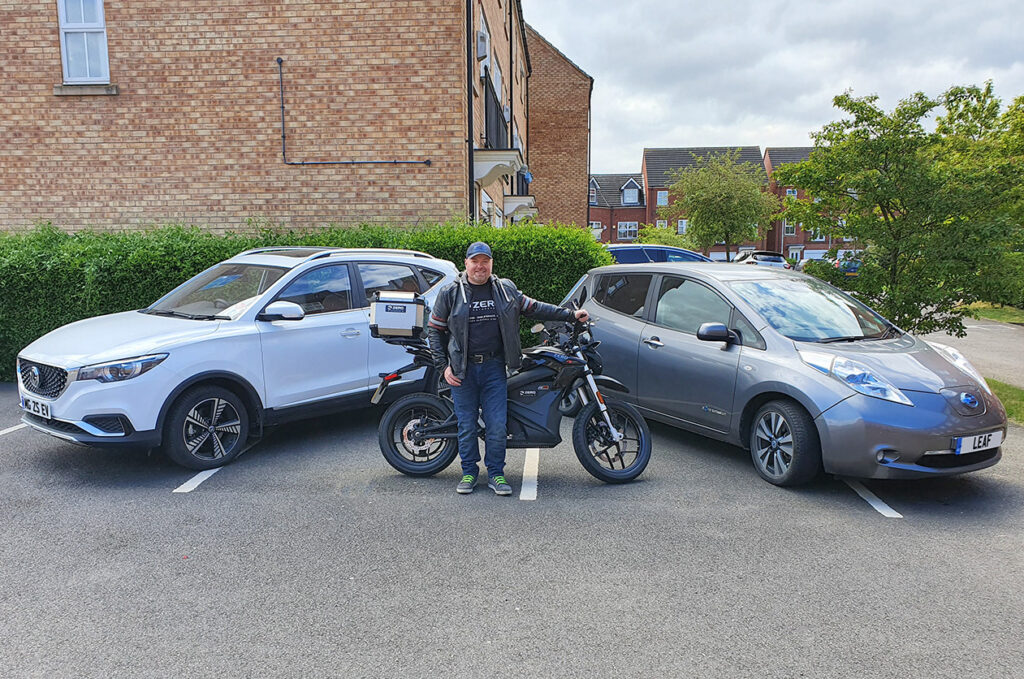With all the buzz around battery-power and promises of a greener future from governments and automotive companies, it seems the age of electric vehicles has dawned. As plug-in car sales soar, another mode of transport is undergoing a similar, albeit relatively slower shift of its own. X Magazine investigates what battery-power means for the future of motorbikes.
By Evangeline Modell
John Chivers rides along the winding country lanes in the Cotswolds. Unlike many die-hard bikers who also enjoy these roads, he lacks the intoxicating roar of an oil-cooled petrol engine with a throaty exhaust. He hears a different melody altogether. Birds singing, the whistle of the wind rushing over his visor, the hum of rubber on tarmac, and the gentle buzz of a battery. This is the soundtrack of an electric motorbike.
According to John, it’s time that exhaust enthusiasts consider a change of tune. “You feel like you’re not intruding on nature which is quite a nice feeling,” he says.
John is no stranger to two wheels. He is an advanced motorcycle instructor and has been a petrolhead for years, but since getting his Zero DSR motorbike, he has turned into a champion of electric. In 2017, he became the first person to ride a battery-powered motorbike from Land’s End to John O’Groats. “What inspired me was that nobody had done it,” he says.


The UK government announced that the manufacturing of new petrol and diesel cars will be banned from 2030. While the plug-in motorbike revolution is behind that of cars, data obtained from the Driver and Vehicle Licensing Agency* shows there were 68 per cent more new registered electric motorbikes and scooters in the UK in 2020 than in 2019 – a total of 1,285.
In a survey conducted by X Magazine of 737 hardcore motorbike enthusiasts, 39 per cent had considered buying an electric motorbike and a quarter of the respondents had tried riding one. The most-mentioned barrier to going electric was the limited mileage range of the bikes, and for some, this new way of travelling seems to be hard to embrace as they buy bikes with their hearts, not their heads.
Paul Taylor is the European marketing manager of Zero, one of the leading electric motorbike companies. He believes that battery-powered bikes, which are mainly used for commuting and short-distance riding, should not be compared to traditional petrol bikes because they serve a different purpose. “Electric motorcycles are not trying to replace petrol bikes. No one’s coming to steal your petrol bike. It’s an alternative,” says Paul. He adds that Zero wants to “educate the public” on the benefits of battery-power and that bikers “need to understand how they work” if their popularity is to continue to grow.


The range that bikes can travel varies hugely between different models and price points. Some will take you only up to 50 miles and others, like the Brutus V9, can reach 280 miles on a single charge. Unlike bikes with internal combustion engines, which reach peak fuel economy on the open road, electric motorbikes perform better and drain their battery slower in stop-and-start riding conditions like in cities. Paul says this means that limited range is not as much of an issue as some people think. “The average recreational riding day in Europe is just over 100 miles, and this is much less for commuters,” he says. “The truth is that many motorbikers don’t do as many miles as they think they do.”
Electric vehicle battery expert, Euan McTurk, says technology is improving rapidly. “We’ve already seen very big improvements over the past decade,” he says. “There are all sorts of battery developments and chemistries coming through the labs.”
Batteries are expensive, but according to Euan, economies of scale will force prices down as demand increases. “The wholesale prices of batteries are coming down all the time,” he says. This contributes to the high purchase cost of most electric bikes. A top-of-the-range Harley- Davidson Livewire costs almost £29,000. Low-budget options are becoming available and, until 2022/23, the UK government’s plug-in grant scheme will take £1,500 off the price.
Despite this, one of the most common reasons for wanting one is their low running costs. A Zero S electric bike with a Power Tank, which has a maximum range of 223 miles, costs about £2 to charge. A large petrol bike would cost almost £25** for the same distance. “I’ve met a couple of guys who own Zeros who almost pay for their bike in fuel savings,” says John.
All that said, charging takes a lot longer than filling up a tank of petrol. Electric motorbikes can charge in about six to eight hours by plugging into any regular power socket. To reduce this time, bikers can invest in ‘Charge Tanks’ and ‘Quick Charge’ accessories which can provide a full battery in two to four hours, but these do come with a hefty price tag. A Zero 6kw Charge Tank costs £2,640.
A worry of some survey participants is that charging infrastructure is hard to come by while on the road. According to Zap-Map, the number of public charging point connectors in the UK almost doubled between 2018 and 2020. There are now more than 37,500. With electricity in most buildings, plugs are already more prominent than petrol stations. Even so, most electric motorbike batteries are rejuvenated at home overnight. “If [riders of petrol bikes] filled their bikes up with petrol at home they would rarely use a petrol station, but they can’t seem to understand that,” says Paul.
Some suggested that they didn’t want to lose the raw experience of riding to the soundtrack of piston-power. The lesser-known Italian motorbike brand Emula, have fitted speakers on its electric bikes to imitate engine and exhaust noises, even adding gear ratios and vibrations to fill the void. For Paul, the joy of riding his Zero electric motorbike is the novelty. “It’s not your petrol bike on mute. It’s a different riding experience,” he says.
Many respondents were concerned they would be less safe on a quiet bike. Yet, it is unproven that noise has an impact on safety. According to the Association of European Motorcycle Manufacturers, most accidents occur when drivers fail to see a motorbike, not hear it. Some countries, like France and Germany, have introduced measures to discourage noise pollution from loud bikes.
The notion of a bike lacking a clutch lever sends a shiver down the spine of some of the motorbikers who get satisfaction from shifting through the gears. Almost 15 per cent mentioned performance and feeling as a dealbreaker. On an electric motorbike, peak torque and instant power are available as soon as you twist the throttle – gearbox rendered unnecessary.
The smooth acceleration might be different from a traditional bike, but proponents of battery- power like John argue that the electric experience can be even more fulfilling. “I’m not bothered about the gears. I’m not bothered about the noise of the bike. I like the sensation of riding. I like the roadcraft,” he says.
Will electric motorbikes rule the roads in the future? “I think the biggest hurdle to mass uptake is the ability to rapid charge and that’s the Achilles heel of electric motorbikes,” says John. Whether they’re on the road to success or will stay stalled at the commuter market remains to be seen, but as more brands start developing battery-powered bikes, the pace of innovation is only
going to increase. “We’re absolutely going to see the Teslas of the motorbike world,” says Euan, “and that’s when things will get interesting.”
*Obtained from a Freedom of Information request to Driver and Vehicle Licensing Agency.
** According to AutoTrader, an average large bike costs 11p per mile in petrol.
